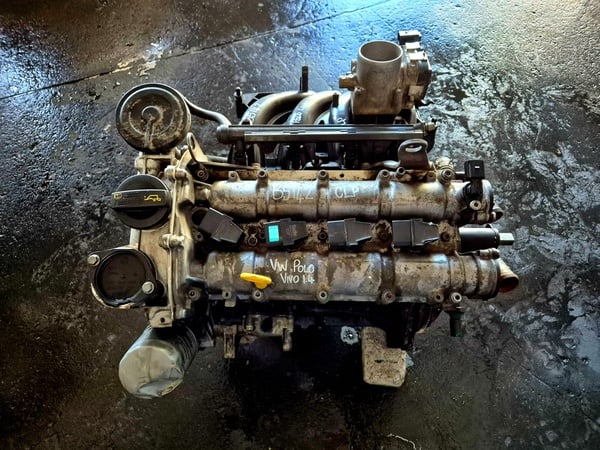Ensure consistent power with a high-performance clp engine.
Ensure consistent power with a high-performance clp engine.
Blog Article
How a Clp Engine Can Boost Effectiveness in Numerous Industries
The arrival of CLP engines marks a considerable change in functional efficiency across numerous sectors, driven by their capability to maximize fuel usage and decrease downtime. As organizations progressively prioritize sustainability along with effectiveness, the duty of CLP engines becomes also more important.
Introduction of CLP Engines
CLP engines, or Constant Liquid Propellant engines, represent a substantial innovation in propulsion modern technology, particularly for space applications. These engines make use of a continual feed system that enables for the sustained expulsion of propellant, bring about improved effectiveness and performance contrasted to conventional solid or hybrid propulsion systems. By keeping a continuous flow of fluid propellant, CLP engines can accomplish more specific thrust control, which is essential for steering spacecraft in different mission circumstances.
The style of CLP engines incorporates sophisticated materials and cutting-edge fuel management systems. clp engine. This leads to decreased weight and raised dependability, important variables for long-duration area missions. In addition, the constant procedure lessens the risk of burning instability, a typical challenge in standard rocket engines.

Advantages in Production
The production of Continual Fluid Propellant (CLP) engines offers numerous notable advantages that improve both effectiveness and cost-effectiveness. Among the key benefits is the streamlined manufacturing procedure, which lowers the intricacy connected with conventional propulsion systems. By using liquid propellant, producers can achieve greater accuracy in engine efficiency, causing enhanced energy result and lowered waste.
In addition, CLP engines assist in a higher degree of modularity, permitting less complicated integration right into different manufacturing lines. This adaptability can significantly decrease preparations and improve total functional flexibility. The use of CLP technology additionally has a tendency to lessen the requirement for substantial maintenance as a result of less moving components, which equates right into decreased downtime and functional expenses.

Applications in Logistics
Leveraging Continuous Liquid Propellant (CLP) engines in logistics offers significant advantages in operational efficiency and reliability. These engines provide a robust solution for various transportation needs, enabling the smooth activity of items throughout huge distances. The intrinsic style of CLP engines redirected here permits consistent power output, which translates into smoother and more foreseeable transport routines.
One of the key applications of CLP engines in logistics remains in sturdy products transport, where they can drive both ground and aerial lorries. Their capacity to keep high performance under varying lots problems makes sure that shipment timelines are met, thus boosting consumer contentment. Furthermore, CLP engines can be integrated into automated logistics systems, facilitating real-time monitoring and maximizing path planning.
Moreover, the sturdiness of CLP engines decreases maintenance downtime, permitting logistics firms to optimize their operational capacities. This is particularly beneficial in warehousing procedures, where efficiency in handling and transporting items is important. As logistics click here to find out more continues to develop, the integration of CLP engines stands for a forward-thinking technique that not only boosts performance yet likewise supports the sector's growing needs for dependability and speed.
Effect On Energy Effectiveness
How do Constant Liquid Propellant (CLP) engines boost energy effectiveness in transportation? CLP engines make use of a constant circulation of liquid gas, optimizing burning processes and preserving a secure thrust result. This design lessens energy losses related to traditional combustion engines, where gas delivery can vary and bring about ineffectiveness.
The continual operation of CLP engines permits an extra efficient thermal cycle, leading to greater details impulse compared to traditional engines. clp engine. This converts to reduced fuel intake for the very same amount of work done, dramatically lowering operational expenses throughout numerous transportation industries, consisting of aviation and maritime markets
Additionally, the capacity of CLP engines to keep optimal performance under varying lots conditions reduces the requirement for regular velocity and slowdown, better enhancing gas performance. Improved energy effectiveness not just contributes to set you back financial savings but also results in lower greenhouse gas emissions, aligning with global sustainability objectives.
Future Trends and Innovations
Arising innovations in Continual Liquid Propellant (CLP) engine innovation guarantee to revolutionize the landscape of transportation performance and sustainability. As sectors pivot towards greener alternatives, CLP engines stand at the forefront, incorporating see here cutting-edge materials and design methodologies that boost efficiency while lessening environmental impact.
Among one of the most promising trends is the fostering of crossbreed systems that integrate CLP engines with renewable power resources. This synergy can maximize gas usage and reduce exhausts, straightening with international sustainability objectives. Advancements in computational liquid characteristics (CFD) are promoting the style of more aerodynamically reliable engines, leading to lowered drag and enhanced fuel efficiency.
In addition, the growth of wise monitoring systems is set to boost operational performances. These systems take advantage of data analytics and IoT modern technology to enhance engine efficiency in real-time, guaranteeing that the engines run within their most efficient criteria.
As research study proceeds to check out alternative propellant solutions-- such as biofuels and artificial fuels-- the future of CLP engines looks appealing. By harnessing these technologies, markets can not just improve their performance but likewise add significantly to a cleaner, a lot more sustainable future in transport.
Conclusion
In final thought, CLP engines stand for a considerable advancement in effectiveness throughout multiple industries. Their capability to maximize fuel intake and reduce operational prices, incorporated with a continuous feed system, improves power outcome and functional reliability. The integration of sophisticated products and less relocating components minimizes maintenance requirements, while positioning with sustainability objectives placements CLP engines as a crucial technology for the future. Continued technology in this area assures further improvements in effectiveness and ecological efficiency.
Report this page